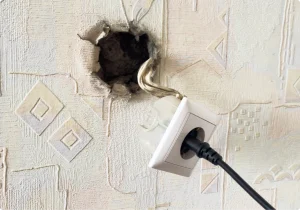Introduction
If you live in a rural area, you have been blessed with peace and quiet. However, if you live in a suburban home, you can’t escape the noise of loud cars and trucks passing by throughout the day. You can search for a “fencing company near me” and hire professionals to build you a fence that will block out some of that noise. Let’s check out how fences can reduce noise in your backyard.
The Details
- Noise-reducing fences – While there are all kinds of noise-reducing fences available in the market, you need to choose one very carefully depending on your property. You need to figure out what kind of noise you want to block out and choose the right material for the fence. Apart from figuring out the type of noise that needs to be blocked out, you also need to figure out where the noise is coming from. Usually, folks opt for redwood or cedar for building the noise attenuation fence. However, you can also choose steel sheets to keep the cost low.
You can also go dirt cheap and build a fence out of rammed earth and straw bales. However, that kind of fence is frowned upon in a highly populated residential area. It’s best to reserve that kind of fence for rural settings. Moreover, it’s recommended to not cut on costs while building a noise-reducing fence since it would come back to bite you in the form of frequent and expensive repairs.
- Factors to consider while building a noise-reducing fence – When you’re trying to build a noise-reducing fence, make sure that you choose materials that are weatherproof and can stand the local climate for years with minor maintenance. The fence is primarily for noise reduction. So, even if one panel or board gets damaged easily, it defeats the whole purpose since it allows in all the noise.
Height is also a very important factor when building noise-reducing fences. Engineers and architects recommend a fence height of 12 to 15 feet for blocking out sound effectively. Taller fences are always more effective at blocking out noise. However, a 12 feet tall fence on a suburban property is impractical, an eyesore, and quite a pain to maintain. Your local HOA bylaws may not even allow you to build a fence as tall as that. It makes your property stand out in a bad way and can bring down the property value of other homes in the neighborhood.
That’s why you need to choose materials that are dense and thick and great at both absorbing and reflecting noise away from your property. Assess your property line before building the fence and make sure that the ground is level. Fill up irregularities and strengthen the ground if it’s not strong enough for the fence post and may dip with time. If the ground can’t be leveled, you need to install the fence while accounting for that and make sure that the fence height remains consistent without uneven gaps.
If the fence line isn’t level, the gaps would allow noise in, and fixing that mistake would be very costly. After the fence is installed, you need to inspect it regularly for holes and gaps. Small animals and other factors may cause such holes and you need to prevent those critters from doing it to prevent the noise-reduction capabilities of your fence from diminishing.
- Paneling for road noise – If you have a fence on your property and don’t want to bring it down, you have a few options for noise reduction. You can install noise-reduction panels on the fence. While they can’t match the performance of a tall and well-planed noise-reducing fence, they do help a lot with noise resistance. Just make sure that there are no gaps on your existing fence and the panels shouldn’t have any gaps between them either. Fix existing gaps before installing those noise-reducing panels.
You can also install a noise-reduction blanket over your existing fence. These kinds of acoustic blankets are weather-resistant. They are made together with sound blankets. They have an absorptive side that’s very effective at blocking out vehicle noise and the loud noise of your neighbor’s pool pump and HVAC units.
- Plants for noise reduction – While fencing can reduce noise to a great extent, it isn’t enough. Even the tallest fence in a residential neighborhood would allow some noise into the backyard. To block them out, you can use plants and design your landscape accordingly. This kind of noise reduction measure is visually stunning and helps to make your backyard greener and more eco-friendly.
However, you need to choose plants carefully. Make sure that the plant grows with a wide and spread-out network of branches and has thick leaves and leaf stems. If possible, get evergreen plants suited to your local climate and soil conditions. This helps you retain their noise-reducing capability even during the winter months. If you live in a warm climate, these plants will also keep your home cooler during the summer months. You can also add vines and climbers to your fence. However, make sure to choose sustainable plants that require less care and maintenance.
- White noise – Another way of reducing noise in your backyard is to ad white noise. White noise isn’t unpleasant like loud honks from road traffic. You don’t need to install large speakers in your backyard for creating white noise either. Instead, you can introduce white noise in a way that also adds visual appeal to your landscape. Add a water fountain or any other type of water feature to add white noise and drown out traffic noises.
Conclusion
By now, it’s pretty evident that height reigns supreme while building noise attenuation fencing. However, building super tall fences is not practical and that’s why you have to carefully select fencing panels and adopt other clever methods to minimize noise as much as possible. To build a noise-reducing fence for your home, you can search for a “fencing company near me” and hire pros fit for the job.



